Haydn’s Trumpet Concerto in E-flat major is a celebrated composition, showcasing the trumpet’s capabilities. Its rich history and technical brilliance make it a cornerstone of classical music, widely performed and admired today.
Overview of the Concerto
Haydn’s Trumpet Concerto in E-flat major, Hob. VIIe:1, is a seminal work in classical music, composed in 1796 for Anton Weidinger and his groundbreaking keyed trumpet. The concerto is structured in three movements: Allegro, Andante, and Allegro, each showcasing the trumpet’s technical and lyrical capabilities. Its innovative use of the keyed trumpet expanded the instrument’s range and expressive potential. The concerto is celebrated for its balanced orchestration and the soloist’s prominence, blending virtuosity with melodic elegance. As a cornerstone of the trumpet repertoire, it remains a favorite among soloists and orchestras worldwide, with numerous PDF scores and arrangements available for study and performance. Its enduring popularity underscores Haydn’s mastery of classical concerto form and his ability to highlight the trumpet’s unique voice.
Importance of the Trumpet Concerto in Classical Music
Haydn’s Trumpet Concerto holds a pivotal place in classical music, marking a significant milestone in the evolution of the trumpet as a solo instrument. Composed for Anton Weidinger’s innovative keyed trumpet, it expanded the instrument’s technical possibilities, enabling a broader range of tonal expression. This concerto not only elevated the trumpet’s status in orchestral music but also influenced later composers to write more sophisticated works for the instrument. Its balanced structure and melodic richness exemplify Haydn’s compositional genius, making it a cornerstone of classical trumpet repertoire. The concerto’s enduring influence is evident in its frequent performance and the availability of PDF scores and study materials, ensuring its continued relevance and appreciation in musical education and performance today.
Popularity and Performance Frequency
Haydn’s Trumpet Concerto remains one of the most popular and frequently performed works in the classical trumpet repertoire. Its melodic beauty, technical brilliance, and historical significance make it a favorite among soloists and audiences alike. The concerto’s accessibility, coupled with its showcase of the trumpet’s capabilities, ensures its regular inclusion in orchestral programs worldwide. PDF scores and parts are widely available, facilitating its performance by both professional and student musicians. Online platforms like IMSLP offer free downloads, further enhancing its reach and popularity. The concerto’s enduring appeal lies in its balanced structure and lyrical depth, making it a staple in classical music education and performance. Its frequent performance underscores its importance as a cornerstone of trumpet literature, continuing to inspire new generations of musicians and audiences.

Historical Background of the Trumpet Concerto
Haydn’s Trumpet Concerto was created in 1796 for Anton Weidinger, an Austrian trumpet virtuoso. It was composed for a revolutionary trumpet design, expanding the instrument’s range and expressive capabilities.

Composition Date and Dedication
Haydn’s Trumpet Concerto was composed in 1796 during his second visit to London. It was dedicated to Anton Weidinger, a renowned trumpet virtuoso and inventor of the keyed trumpet. Weidinger’s innovative instrument inspired Haydn to explore new possibilities for the trumpet, resulting in a work that highlighted both the technical and lyrical aspects of the instrument. The concerto premiered in London, showcasing Weidinger’s mastery and the instrument’s expanded capabilities. This dedication not only honored Weidinger but also marked a significant milestone in the evolution of trumpet music, as it introduced the keyed trumpet to the classical music scene.
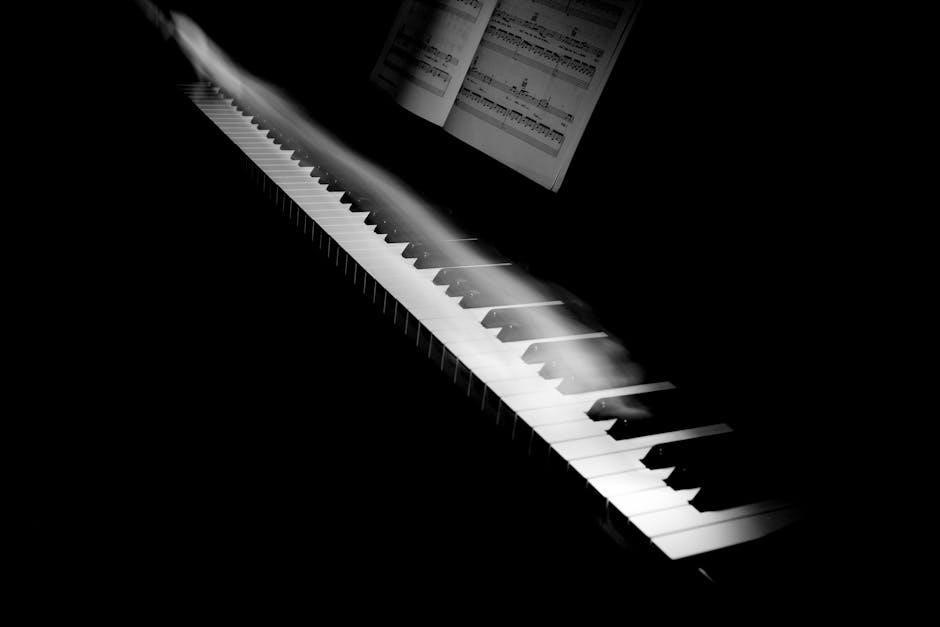
Instrumentation and Innovations
Haydn’s Trumpet Concerto was composed for a solo trumpet and a Classical-era orchestra, including strings, woodwinds, and brass. The work was innovative due to its use of the keyed trumpet, invented by Anton Weidinger. This instrument allowed for a wider range of notes and greater chromatic possibilities compared to the natural trumpet. The concerto’s orchestration balances the solo trumpet with the ensemble, creating a harmonious dialogue. Haydn’s writing for the trumpet was groundbreaking, as it expanded the technical and expressive capabilities of the instrument. The concerto is structured in three movements, showcasing the trumpet’s agility and lyricism. The use of the keyed trumpet marked a significant advancement in brass instrument design, influencing future compositions for the trumpet.
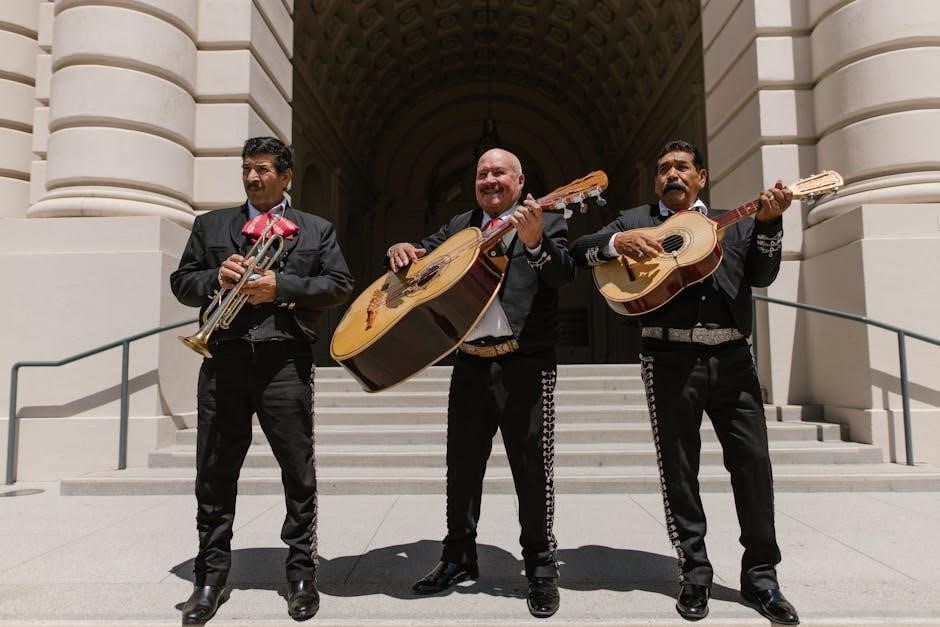
Historical Significance and Rediscovery
Haydn’s Trumpet Concerto holds significant historical importance as it was composed for Anton Weidinger’s innovative keyed trumpet, revolutionizing the instrument’s capabilities. The concerto was rediscovered and popularized in the 20th century, becoming a staple in trumpet repertoire. Its resurgence highlighted Haydn’s foresight in expanding the trumpet’s technical and expressive potential. The concerto’s historical journey reflects the evolution of brass instruments and their integration into classical music. Today, it remains a celebrated work, symbolizing the bridge between musical innovation and tradition. The rediscovery has also led to numerous editions and arrangements, ensuring its accessibility and enduring appeal for modern musicians and audiences alike.
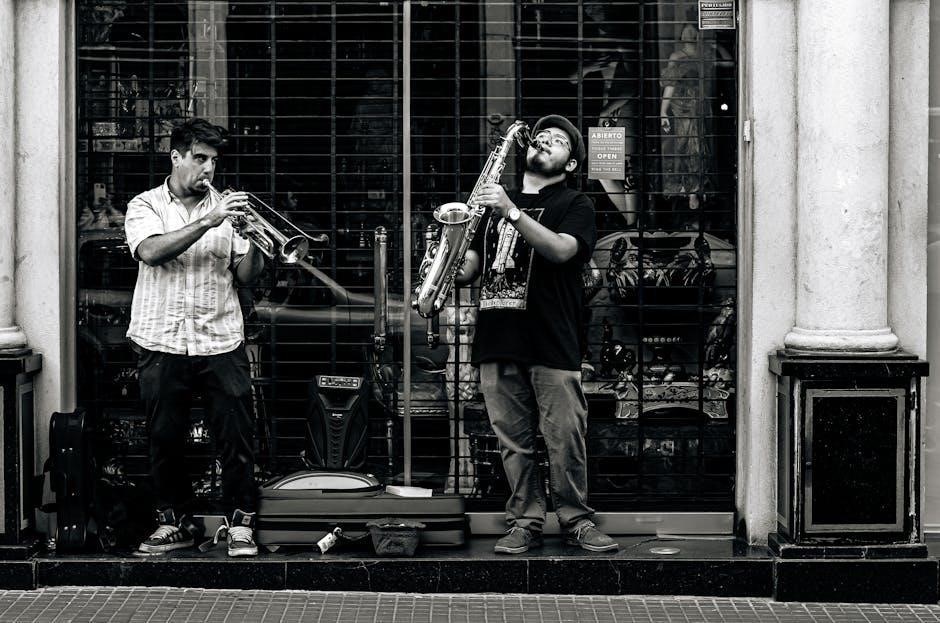
Musical Structure and Movements
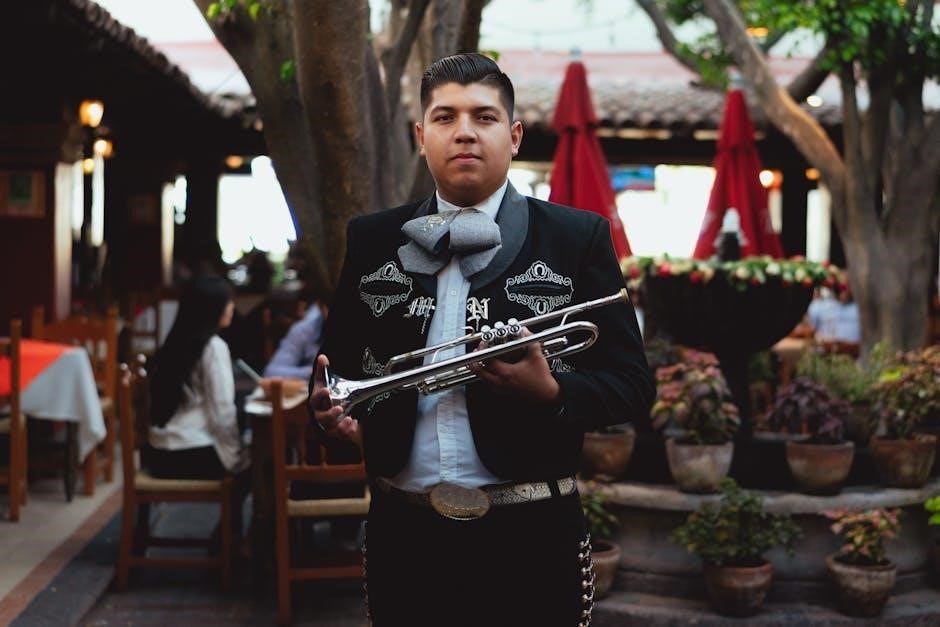
Haydn’s Trumpet Concerto is structured in three movements: Allegro, Andante, and Allegro. It showcases a balanced dialogue between the trumpet and orchestra, blending technical brilliance with lyrical elegance throughout its movements.
First Movement: Allegro
The first movement of Haydn’s Trumpet Concerto in E-flat major, marked Allegro, is a vibrant and dynamic opening that sets the tone for the entire piece. Composed in sonata form, it features a lively dialogue between the trumpet and the orchestra, with a bright and festive character. The movement begins with a grand orchestral fanfare, introducing the main themes that are later elaborated by the solo trumpet. The Allegro showcases the trumpet’s technical agility, with intricate passages and a wide range of tonal expression. Haydn’s mastery of orchestration is evident, as the interplay between the soloist and the ensemble creates a sense of drama and energy. This movement is particularly noted for its challenging cadenzas, which highlight the soloist’s virtuosity and add a personal touch to the performance. The Allegro remains a cornerstone of trumpet repertoire, celebrated for its brilliance and musical depth.
Second Movement: Andante
The Andante movement of Haydn’s Trumpet Concerto is a lyrical and expressive slow movement, providing a striking contrast to the energetic Allegro. It highlights the trumpet’s ability to sing melodically, with a beautiful, soaring theme that showcases the instrument’s lyrical capabilities. The movement is structured in a relaxed sonata form, where the solo trumpet presents a elegant melody accompanied by a subtle orchestral texture. The harmonic development is rich, with moments of tension and resolution that add depth to the music. A middle section introduces a darker, minor-key episode, adding emotional contrast before returning to the main theme. The Andante concludes gently, leaving a lasting impression of serenity and musical beauty. This movement is particularly cherished for its ability to demonstrate the trumpet’s expressive range and the soloist’s interpretive skill.
Third Movement: Allegro
The final movement of Haydn’s Trumpet Concerto, marked Allegro, is a lively and spirited conclusion to the work. It is structured in a rondo form, featuring a recurring main theme that alternates with contrasting episodes. The trumpet soloist is showcased with dazzling technical passages, including rapid arpeggios and high register playing, demonstrating the instrument’s expanded capabilities. The orchestra accompanies with dynamic interplay, adding rhythmic energy and harmonic richness. A highlight of the movement is the cadenza, which allows the soloist to display virtuosic improvisation, blending seamlessly into the concerto’s structure. The Allegro is a celebration of both the trumpet’s technical advancements and Haydn’s mastery of classical form. Its exuberant and joyful character leaves a lasting impression, making it a favorite among audiences and performers alike. This movement underscores the concerto’s historical significance and enduring appeal in classical music repertoire.
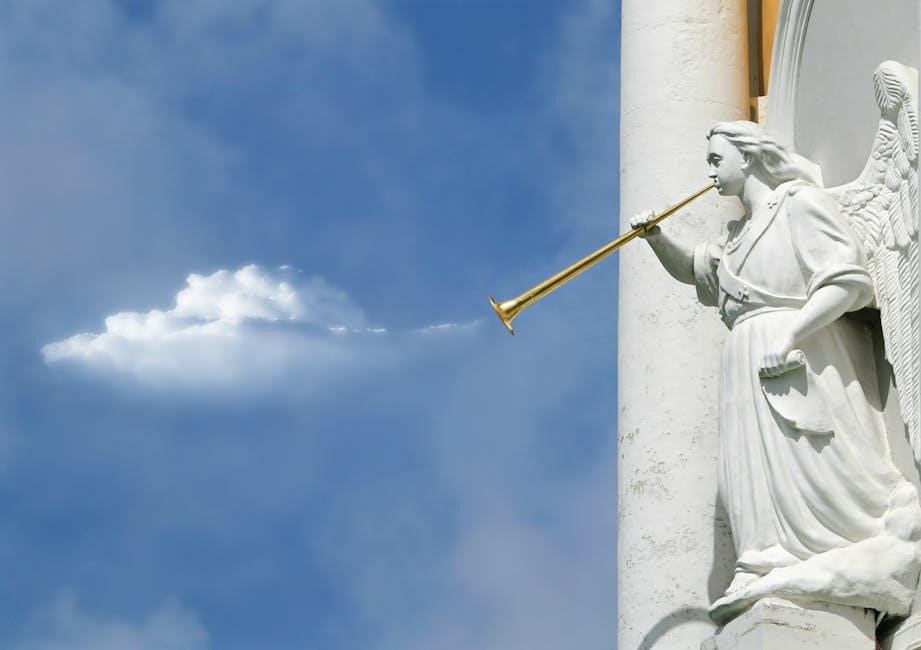
Performance Considerations
Performing Haydn’s Trumpet Concerto demands technical precision and musicality. The soloist must navigate intricate passages, while the orchestra maintains balance and clarity, ensuring a captivating rendition of this classical masterpiece.
Technical Challenges for Trumpet Soloists
The Trumpet Concerto in E-flat major presents significant technical challenges, particularly in its demanding passages and high register requirements. Soloists must master intricate fingerings and precise intonation, especially in the Allegro movements. The concerto’s original composition for an advanced trumpet design allows for a wider range, but modern players often use a B-flat trumpet, requiring careful adaptation. The cadenzas, especially in the first and third movements, demand exceptional skill and creativity. Additionally, the sustained melodies in the Andante movement test the soloist’s breath control and phrasing. Proper articulation and dynamic control are crucial to navigate Haydn’s complex rhythms and lyrical sections effectively. These technical demands make the concerto a benchmark for trumpet virtuosity, pushing soloists to achieve both precision and musicality.
Orchestral Accompaniment and Balance
The orchestral accompaniment in Haydn’s Trumpet Concerto plays a vital role in supporting the soloist while maintaining a delicate balance. The ensemble typically includes strings, woodwinds, and brass, with careful dynamics to ensure the trumpet remains prominent. Haydn’s orchestration is noted for its clarity and texture, allowing the soloist to shine without being overshadowed. The interplay between the orchestra and the trumpet creates a harmonious dialogue, particularly in the lyrical passages of the Andante movement. Conductors must carefully manage the orchestral phrasing and articulation to complement the soloist’s interpretation. Additionally, the horns are often highlighted, adding depth and harmonic richness to the overall sound. This balanced approach ensures the concerto remains a vibrant and engaging work, showcasing both the soloist’s virtuosity and the orchestra’s expressive capabilities.
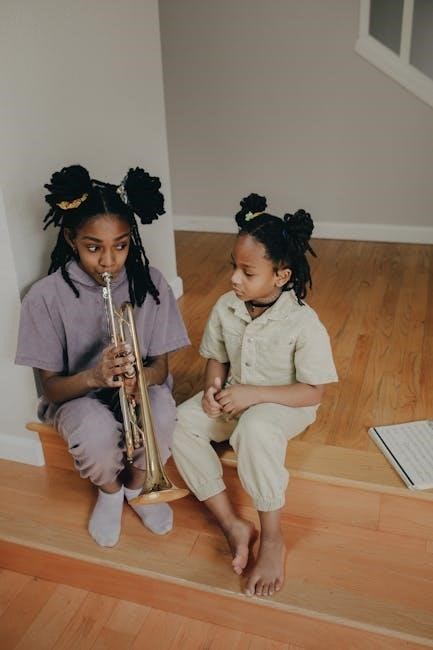
Role of the Soloist and Interpretation
The trumpet soloist in Haydn’s concerto must possess exceptional technical mastery and musical artistry. The role demands precision, clarity, and expressive phrasing, particularly in navigating the work’s virtuosic passages. Interpretation is crucial, as the soloist must balance brilliance with lyrical sensitivity, especially in the Andante movement. Collaboration with the conductor is vital to ensure a cohesive dialogue between the soloist and the orchestra. Many PDF scores and parts are available online, offering detailed insights into Haydn’s original intent and facilitating study and performance. Soloists often add their own cadenzas, showcasing creativity while staying true to the Classical style. The ability to project over the orchestra while maintaining tonal beauty is essential, making this concerto a benchmark for trumpet virtuosity and interpretative skill.
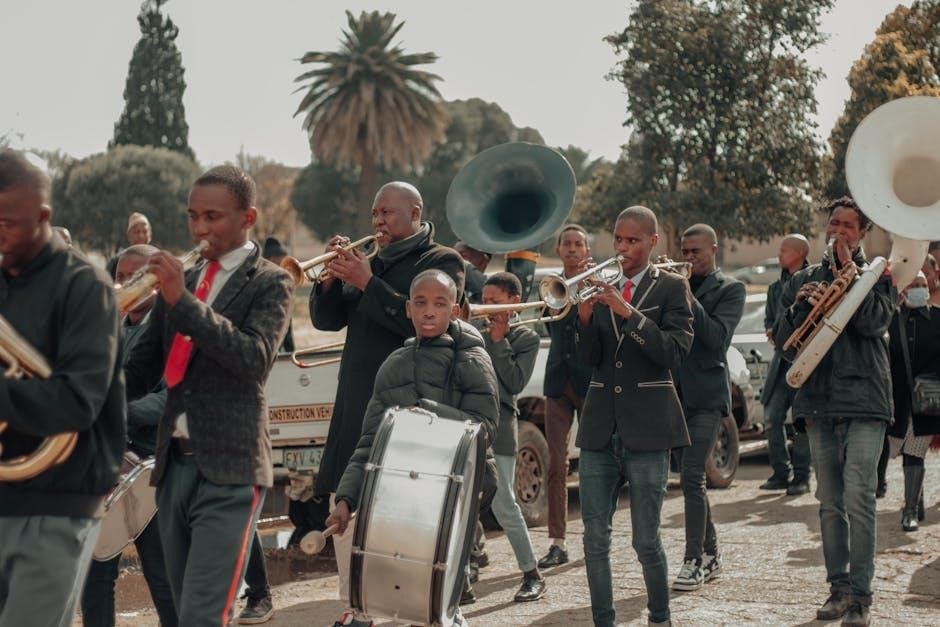
Resources for Study and Performance
Haydn’s Trumpet Concerto is widely available in PDF scores and parts online. Platforms like IMSLP offer free downloads, while Musicnotes provides arrangements for study and performance, supporting musicians globally.
Available PDF Scores and Parts
High-quality PDF scores and parts for Haydn’s Trumpet Concerto are widely available online. Platforms like IMSLP offer free downloads of the full score, solo trumpet part, and orchestral parts. Musicnotes and similar sites provide downloadable PDFs, including arrangements for trumpet in Bb. Many editions include cadenzas and performance notes, ensuring comprehensive study materials. Additionally, specific movements, such as the Allegro and Andante, can be downloaded separately for focused practice. These resources cater to both professional musicians and students, offering flexible options for performance and analysis. The availability of these PDFs has made Haydn’s concerto accessible to a global audience, facilitating its widespread study and performance.
Recommended Editions and Arrangements
For Haydn’s Trumpet Concerto, several editions are highly recommended for their accuracy and performance-friendly layouts. The IMSLP edition is a popular choice, offering free access to the full score and parts. Musicnotes provides a well-formatted version with clear notation, ideal for both professionals and students. Arrangements for trumpet in Bb are widely available, ensuring compatibility with modern instruments. Some editions include cadenzas composed by renowned trumpeters, adding a touch of interpretive flair. Additionally, transposed versions for Eb trumpet are accessible, catering to historical performance practices. These resources ensure that musicians can access high-quality materials, whether for study, practice, or performance. The variety of editions and arrangements underscores the concerto’s enduring appeal and adaptability for contemporary musicians.
Online Platforms for Download and Study
Several online platforms offer high-quality PDF scores and parts for Haydn’s Trumpet Concerto. IMSLP provides free access to the full score, trumpet part, and orchestral accompaniment, making it a go-to resource for musicians. Musicnotes and Sheet Music Plus also offer downloadable versions, often with interactive features. TrumpetStudio.com is another excellent resource, featuring detailed guides, MIDI files, and performance tips. Additionally, platforms like Free-Scores and Score Exchange host arrangements and transposed versions for Bb trumpet. These platforms cater to both professionals and students, ensuring easy access to study materials and performance-ready scores. The availability of these resources has made Haydn’s concerto more accessible than ever, fostering its widespread study and performance.
